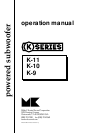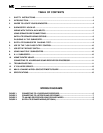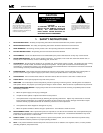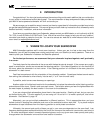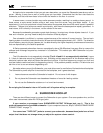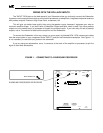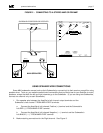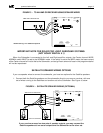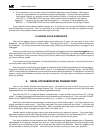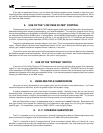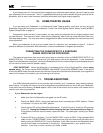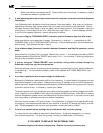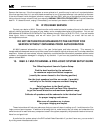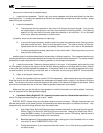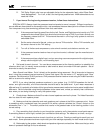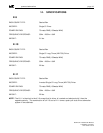
page 5powered subwoofers
A simple rule to remember is that you get more bass when you move the Subwoofer towards any wall or
corner. Moving it away from a wall or corner gives you less bass. Remember that the floor also loads the
Subwoofer, and that maximum bass is found with the woofer on the floor in a corner.
In some rooms, a corner location may excite resonance modes, resulting in a muddy or boomy sound. In
these rooms, a more central location along a wall, away from the corner, may give better results. If you
experiment, try to find a spot where no bass notes seem to overpower others and the overall sound is powerful
and clean. The goal is to achieve a smooth sound quality, with the entire bass spectrum equally prominent. In
most rooms, this is directly in the corner, not the center of the room.
Because the subwoofer generates a great deal of energy, its output may vibrate objects close to it. If you
hear such vibration, you may need to damp the vibration of nearby objects.
One subwoofer is sufficient in a stereo system because of the nature of human hearing. The ear-brain
hearing system is unable to locate the direction of bass sounds below approximately 100 - 150 Hz. The direction
of low frequency sounds (drums, basses, etc.) is determined by the higher frequency overtones and harmonics
that are reproduced by the Satellite speakers.
K-Series powered subwoofers have an exceptionally sharp (36 dB/octave) low-pass filter to remove the
midbass and midrange frequencies, unwanted in a Subwoofer. This makes your M&K Subwoofer
truly
non-
directional.
The K-9 subwoofer is not magnetically shielded (The K-10 and K-11 are magnetically shielded). Leave
2 - 3 feet of clearance around any television set. Shielding avoids magnetization of the shadow mask of the
television's picture tube, which will distort the television's picture. If this ever happens to your set, turn it off and
on a few times to use the set's built-in degaussing circuitry. If the problem persists, contact a TV technician and
ask him or her to use an external degaussing coil.
No matter where you put the Subwoofer, you must allow room for ventilation of its heatsink and backplate.
The Subwoofer's power amplifier is mounted on the backplate, and it generates heat.
1. Leave clearance around the Subwoofer's heatsink. Do not cover it with drapes.
2. Do not place the Subwoofer near baseboard heaters or forced air heating outlets.
3. Do not use the Subwoofer outdoors or in a humid environment.
Do not plug the Subwoofer into an AC outlet until all system wiring is complete.
4. SUBWOOFER HOOK-UP
There are two different ways to connect the Subwoofer to your system. One uses speaker wire, and the
other uses interconnect cable with RCA-type jacks.
If your receiver or processor has a SUBWOOFER OUTPUT RCA-type jack, use it. This is the
preferred connection for your M&K subwoofer. If your component does not, skip to "USING SPEAKER WIRE
CONNECTIONS" on page 7).
You cannot use "TAPE OUT" jacks to connect your subwoofer, because these jacks have a fixed
output level that does not change when you adjust the system volume control.



